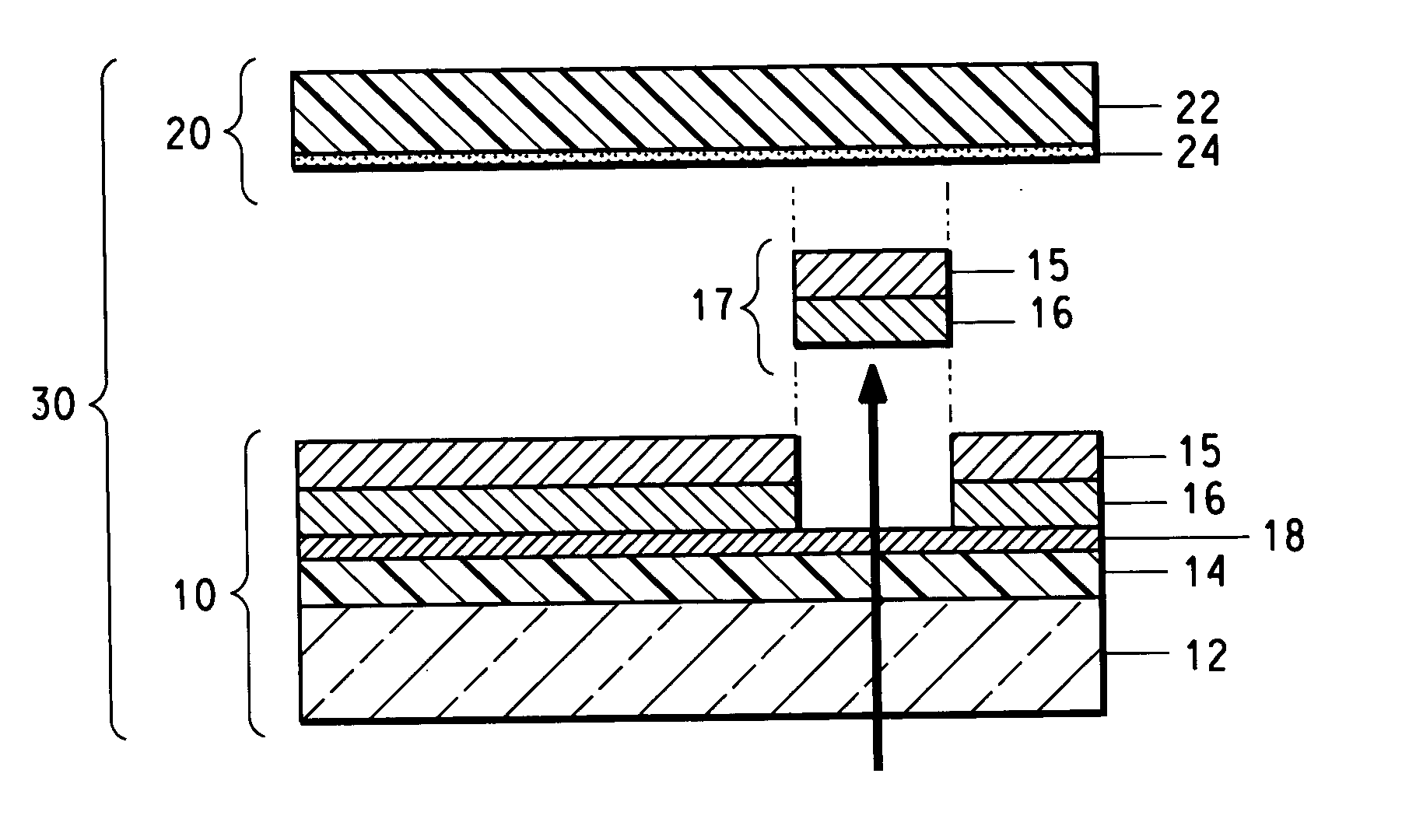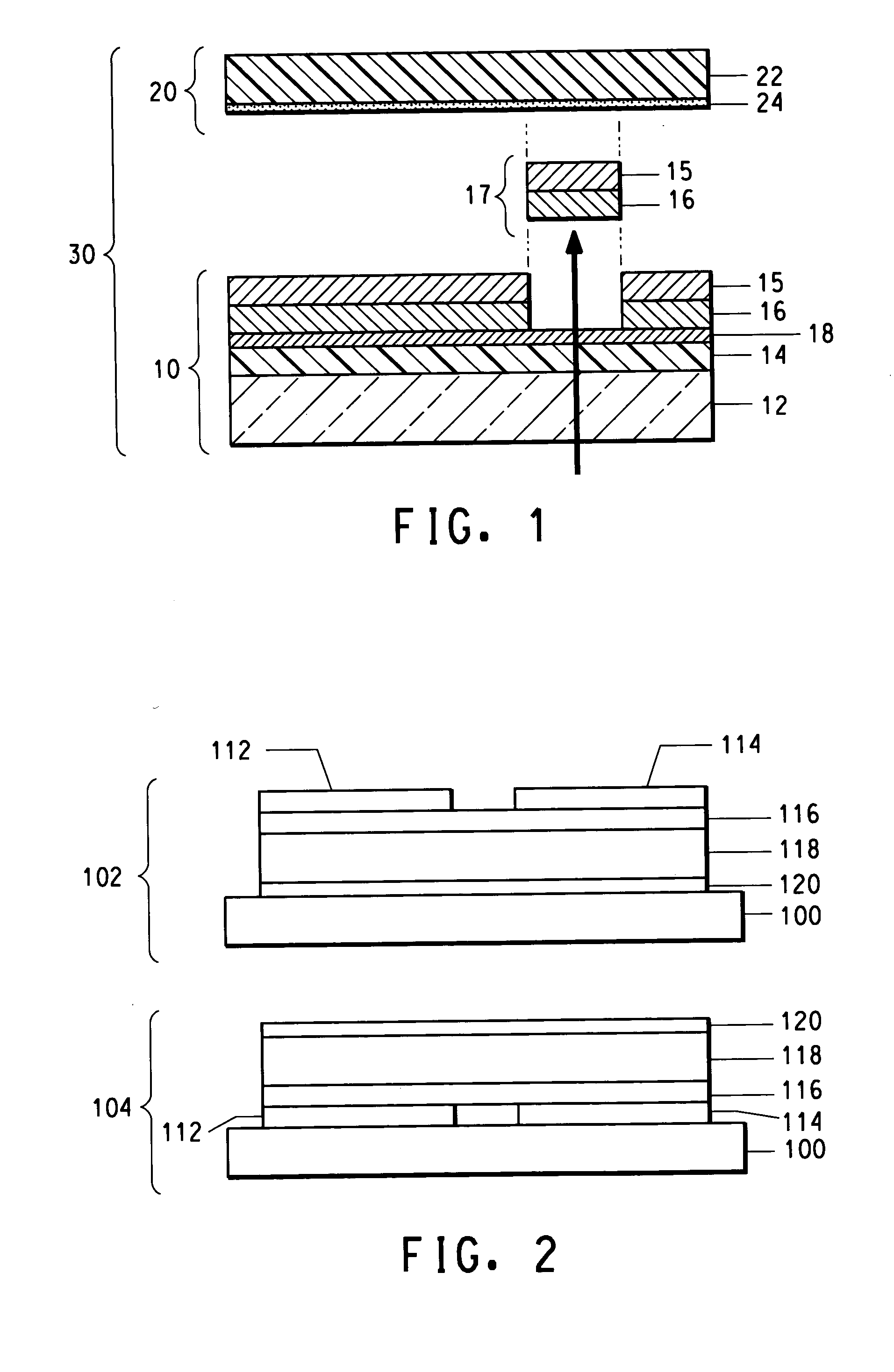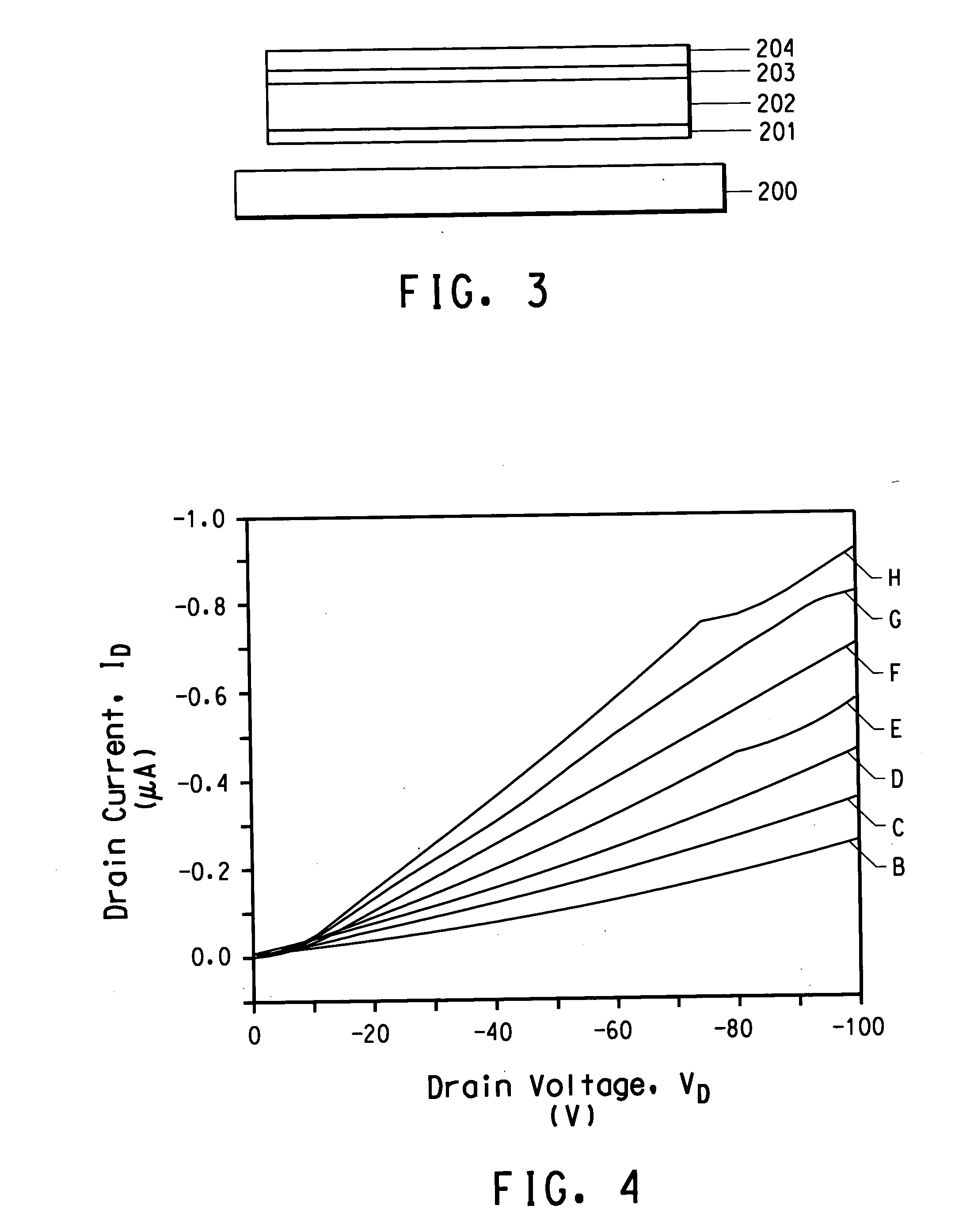Process and donor elements for transfering thermally sensitive materials to substrates by thermal imaging
a technology of thermal imaging and donor elements, which is applied in the direction of diffusion transfer process, thermography, instruments, etc., can solve the problems of high cost of organic transistors, severe degradation of organic semiconductors, and low cost of traditional transistors
- Summary
- Abstract
- Description
- Claims
- Application Information
AI Technical Summary
Benefits of technology
Problems solved by technology
Method used
Image
Examples
example 1
[0063] The TFT in bottom contact configuration described in the following example was printed via thermal imaging using four donor elements. Each of the donor elements included a 4 mil (0.0363 mm) thick substrate of Mylar®, 400 D optical clarity, available from E. I. DuPont de Nemours, Inc. (Wilmington, Del.) coated with 100 Å of nickel by electron beam deposition, to about 40% optical transmission.
[0064] The polyaniline (PANI) used was prepared through emulsion polymerization following the procedure outlined in U.S. Pat. No. 5,863,465. Dinonylnaphthalene sulfonic acid (DNNSA) was used as the dopant. The doped PANI is hereafter referred to as PANI-DNNSA. The addition of DNNSA was controlled such that the moles of sulfur atoms from the acid equaled the moles of nitrogen atoms in the backbone of the PANI. This was confirmed by elemental analysis after washing, separating and drying the resulting PANI-DNNSA. Carbon nanotubes were dispersed in PANI-DNNSA using an acoustic Dukane sonica...
PUM
| Property | Measurement | Unit |
|---|---|---|
| decomposition temperature | aaaaa | aaaaa |
| thick | aaaaa | aaaaa |
| size | aaaaa | aaaaa |
Abstract
Description
Claims
Application Information
 Login to View More
Login to View More - R&D
- Intellectual Property
- Life Sciences
- Materials
- Tech Scout
- Unparalleled Data Quality
- Higher Quality Content
- 60% Fewer Hallucinations
Browse by: Latest US Patents, China's latest patents, Technical Efficacy Thesaurus, Application Domain, Technology Topic, Popular Technical Reports.
© 2025 PatSnap. All rights reserved.Legal|Privacy policy|Modern Slavery Act Transparency Statement|Sitemap|About US| Contact US: help@patsnap.com



